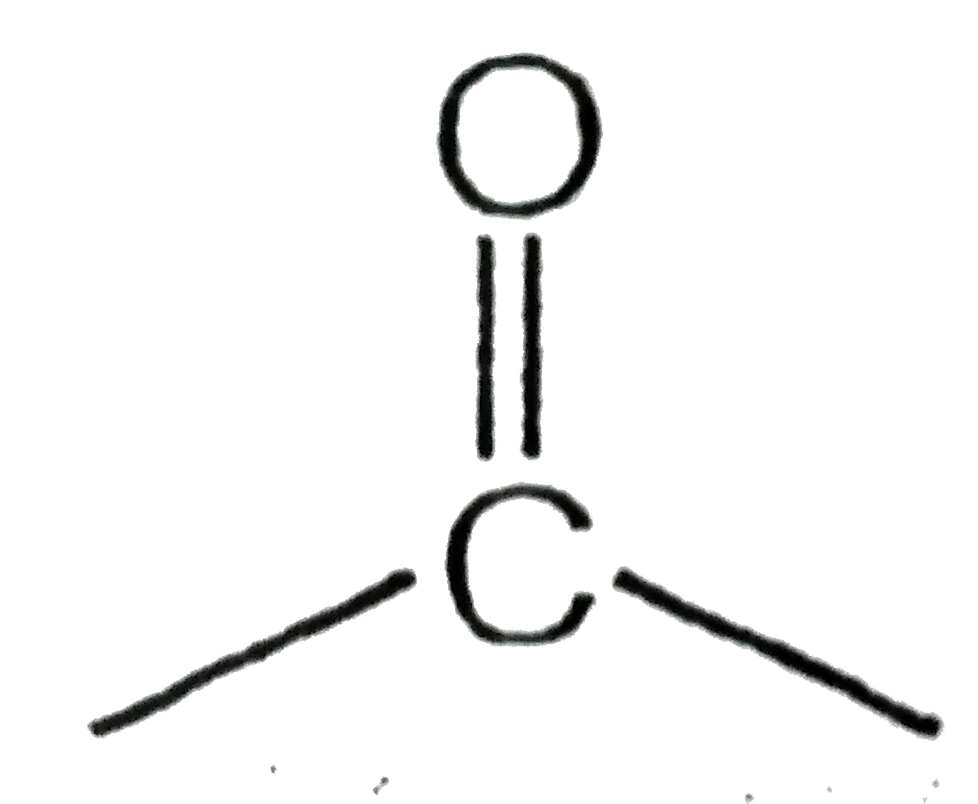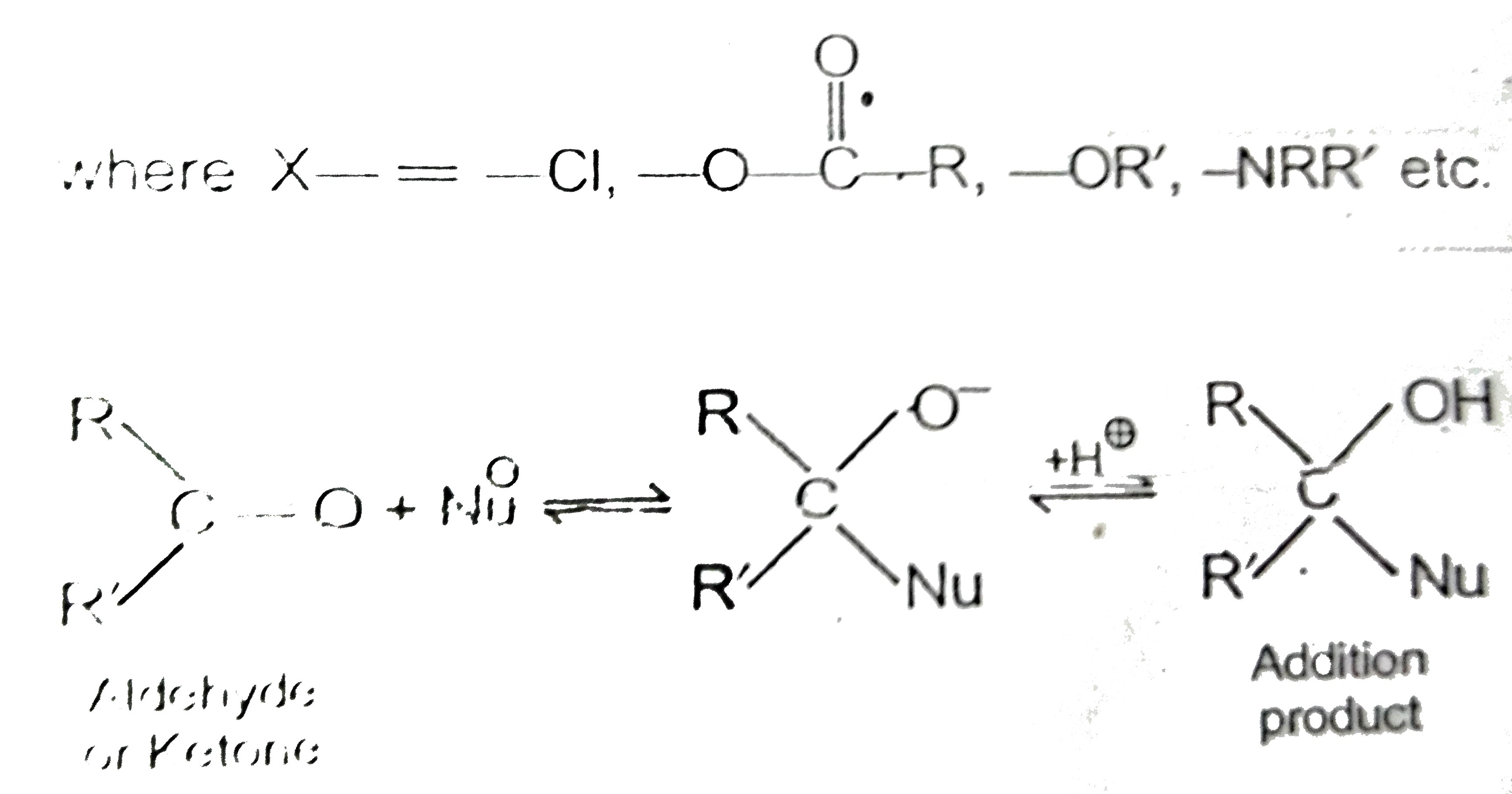Statement-I: Unlike the >C=O group of aldehydes and ketones, the C=O of R−O∣∣C−OH does not undergo nucleophilic addition reactions.
Because
Statement-II: Carboxylic acids exist as dimers due to intermolecular hydrogen bonding in aprotic medium.
Statement-I is True, Statement-II is True : Statement-II is a correct explanation for Statement-I
Statement-I is True, Statement-II is True : Statement-II is NOT a correct explanation for Statement-I
Statement-I is True, Statement-II is False.
Statement-I is False, Statement-II is True.
The correct Answer is:C
To analyze the given statements, we will break down the reasoning behind each statement step by step.
Step 1: Understanding Statement-I
Statement-I: Unlike the C=O group of aldehydes and ketones, the C=O of carboxylic acids (R−COOH) does not undergo nucleophilic addition reactions.
- Explanation: In aldehydes and ketones, the carbonyl carbon is electrophilic due to the difference in electronegativity between carbon and oxygen. The oxygen atom carries a partial negative charge, while the carbon carries a partial positive charge, making it susceptible to nucleophilic attack.
- In carboxylic acids, the carbonyl carbon is less electrophilic because the presence of the hydroxyl group (−OH) and the resonance stabilization provided by the adjacent oxygen atoms increases the electron density on the carbonyl carbon. This reduced electrophilicity makes the carbonyl carbon less reactive towards nucleophiles.
Step 2: Understanding Statement-II
Statement-II: Carboxylic acids exist as dimers due to intermolecular hydrogen bonding in aprotic medium.
- Explanation: Carboxylic acids can form dimers through hydrogen bonding. In an aprotic medium (solvents that do not donate protons), such as DMSO or THF, carboxylic acids can still form dimers because the hydrogen bonding occurs between the −OH group of one molecule and the carbonyl oxygen of another molecule. This dimerization is a significant factor in the properties of carboxylic acids.
Step 3: Evaluating the Relationship Between the Statements
- Statement-I is true as carboxylic acids do not undergo nucleophilic addition reactions due to the reasons discussed.
- Statement-II is also true as carboxylic acids can form dimers in aprotic solvents due to hydrogen bonding.
- However, Statement-II does not explain Statement-I. The reason for the lack of nucleophilic addition in carboxylic acids is due to the increased electron density on the carbonyl carbon, not directly due to dimerization.
Conclusion
Both statements are correct, but Statement-II does not serve as an explanation for Statement-I. Therefore, the correct answer is:
Option B: Both statements are correct, but Statement-II is not the correct explanation of Statement-I.
---
Statement-I: Unlike the C=O group of aldehydes and ketones, the C=O of carboxylic acids (R−COOH) does not undergo nucleophilic addition reactions.
- In carboxylic acids, the carbonyl carbon is less electrophilic because the presence of the hydroxyl group (−OH) and the resonance stabilization provided by the adjacent oxygen atoms increases the electron density on the carbonyl carbon. This reduced electrophilicity makes the carbonyl carbon less reactive towards nucleophiles.
Statement-II: Carboxylic acids exist as dimers due to intermolecular hydrogen bonding in aprotic medium.
- Statement-I is true as carboxylic acids do not undergo nucleophilic addition reactions due to the reasons discussed.
- Statement-II is also true as carboxylic acids can form dimers in aprotic solvents due to hydrogen bonding.
- However, Statement-II does not explain Statement-I. The reason for the lack of nucleophilic addition in carboxylic acids is due to the increased electron density on the carbonyl carbon, not directly due to dimerization.
Both statements are correct, but Statement-II does not serve as an explanation for Statement-I. Therefore, the correct answer is:
Topper's Solved these Questions
Similar Questions
Statement-I: Tert-Butoxide is a stronger base than OH− or C2H5O− ion but is a much poorer nucleophile
Because
Statement-II: A negatively charged ions is always more powerful nucleophile than its conjugate acid.
View SolutionBoth carbonyl compounds and acid derivatives though they contain
 grouping yet the reactions given by them are entirely different.
grouping yet the reactions given by them are entirely different.
As Aldehydes and Ketones give addition product with a nucleophile, while carboxylic acid derivatives give nucleophilic acyl substitution through addition/elimination mechanism.

Where X−=−Cl−O−O∣∣C−R−OR,−NR(R) etc.

Why aldeydes and Ketones give nucleophilic addition reaction while acid derivatives prefer nucleophilic acyl substititution reaction?
View Solution
Knowledge Check
Ketones ⎛⎜ ⎜⎝R−O||C−R'⎞⎟ ⎟⎠ can be obtained in one step by (where R and R' are alkyl groups)
Ahydrolysis of estersBoxidation of primary alcoholsCoxidation of secondary alcoholsDreaction of alkyl halides with alcohols.
Aldehyde, ketone, acid and acid derivatives contain >C=O group. Aldehyde and ketones gives nucleop addition reactions where as acid and acid derivatives gives nucleophilic addition followed by ellmination reaction Nucleophilic addition reactions followed by ellimination of acid derivatives is known as acyl substitution reacts This subsitution reaction takes places by formation of tertrahedral intermediate.
Which one of the following is least reactive compound for nucleophilic acyl substitution.
View SolutionAldehyde, ketone, acid and acid derivatives contain >C=O group. Aldehyde and ketones gives nucleop addition reactions where as acid and acid derivatives gives nucleophilic addition followed by ellmination reaction Nucleophilic addition reactions followed by ellimination of acid derivatives is known as acyl substitution reacts This subsitution reaction takes places by formation of tertrahedral intermediate.
Which of the following compounds has very poor leaving group?
View SolutionAldehyde, ketone, acid and acid derivatives contain >C=O group. Aldehyde and ketones gives nucleop addition reactions where as acid and acid derivatives gives nucleophilic addition followed by ellmination reaction Nucleophilic addition reactions followed by ellimination of acid derivatives is known as acyl substitution reacts This subsitution reaction takes places by formation of tertrahedral intermediate. For the given reaction
_E01_571_Q01.png)
which of these is correct?
View SolutionStatement I: p-Nitrophenol is a stronger acid than o-nitrophenol.
Statement II: Intramolecular hydrogen bonding makes the o-isomer weaker than p-isomer.
View SolutionStatement-I: R−C≡O+ is more stable than R−C+=O
Because
Statement-II: Resonance in carbonyl compound provides_E01_565_Q01.png)
View SolutionStatement-I: CH3COCH2COOC2H5 will give iodoform test.
Because
Statement-II: It contains CH3O∣∣C− group linked to a carbon atom.
View SolutionIn the given sequence of reaction, identify Y
C6H5−O∣∣C−CH3SeO2−−→X(i)Conc.NaOH/Δ−−−−−−−−−−−−−−−→(ii)H2O/H⊕Y
View Solution
